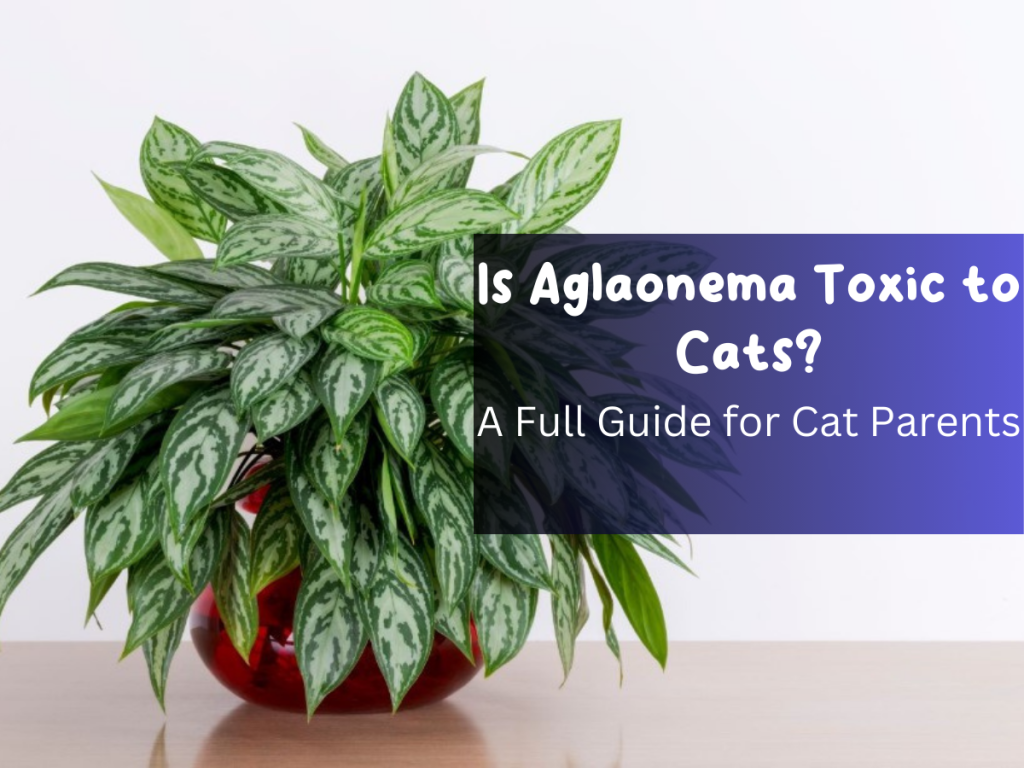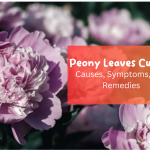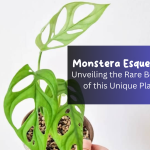Aglaonema, commonly known as Chinese evergreen, is a popular houseplant known for its attractive foliage and ability to thrive in various indoor environments. However, if you are a cat owner, you may be concerned about whether Aglaonema poses any risks to your feline companion. In this article, we will explore the potential toxicity of Aglaonema to cats, discussing the symptoms, precautions, and steps you can take to keep your cat safe.
Understanding Aglaonema
Aglaonema is a genus of flowering plants native to Southeast Asia and belongs to the family Araceae. Their vibrant leaves and low-maintenance nature have become a favorite choice for indoor plant enthusiasts. Aglaonema plants are available in various colors and patterns, making them visually appealing additions to homes and offices.
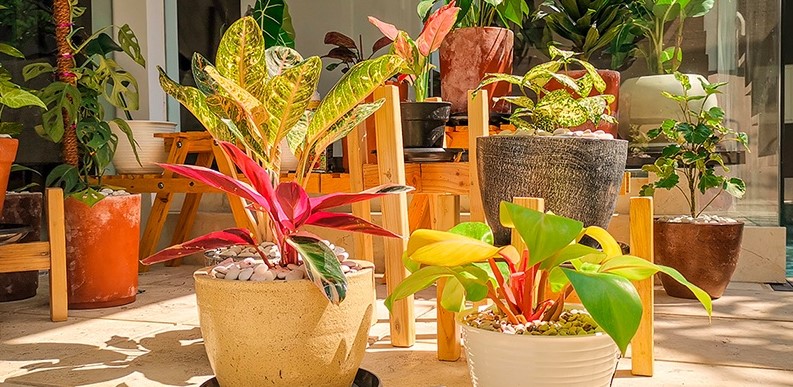
Toxic Compounds in Aglaonema
Aglaonema plants contain certain compounds that can be toxic to cats if ingested. The main poisonous substances in Aglaonema are insoluble calcium oxalate crystals, also known as raphides. These crystals can irritate cats’ mouths, tongues, and gastrointestinal tracts, leading to various symptoms.
Symptoms of Aglaonema Toxicity in Cats
If a cat ingests Aglaonema or comes into contact with its sap, it may exhibit several symptoms of toxicity. These symptoms may include:
- Oral irritation: Cats may experience drooling, pawing at the mouth, and increased swallowing due to the irritating effects of the calcium oxalate crystals.
- Gastrointestinal upset: Vomiting, diarrhea, and loss of appetite are common signs of plant toxicity in cats.
- Respiratory distress: In rare cases, if a cat inhales Aglaonema pollen or sap, it may experience difficulty breathing or coughing.
Preventing Aglaonema Toxicity in Cats
As a responsible cat owner, there are several precautions you can take to ensure the safety of your feline friend:
- Avoid exposure: The best way to prevent Aglaonema toxicity is to keep the plant out of your cat’s reach. Please place it in areas inaccessible to your cat, such as high shelves or rooms off-limits to your pet.
- Supervise interactions: If you choose to keep Aglaonema in areas accessible to your cat, supervise their interactions closely. Cats are naturally curious, and it’s important to discourage them from chewing or nibbling on the plant.
- Provide alternative stimuli: Cats often chew on plants due to boredom or a lack of stimulation. Ensure your cat can access safe, cat-friendly toys and environmental enrichment to reduce their interest in chewing on plants.
- Consider safe alternatives: If you still want to enjoy the beauty of indoor plants, consider cat-safe alternatives such as spider plants (Chlorophytum comosum) or catnip (Nepeta cataria), which are non-toxic to cats.
What to Do If Aglaonema Toxicity is Suspected
If you suspect your cat has ingested Aglaonema or is showing symptoms of plant toxicity, it’s crucial to take immediate action:
- Contact your veterinarian: Inform your veterinarian about the situation, detailing the symptoms and the possibility of Aglaonema ingestion. They will guide you on the necessary steps to take.
- Follow professional advice: Your veterinarian may recommend inducing vomiting, administering activated charcoal, or providing supportive care to your cat based on the severity of the symptoms.
- Keep the plant sample: If possible, take a sample of the plant or any remaining parts your cat may have chewed on; this can help identify the plant and determine the appropriate treatment.
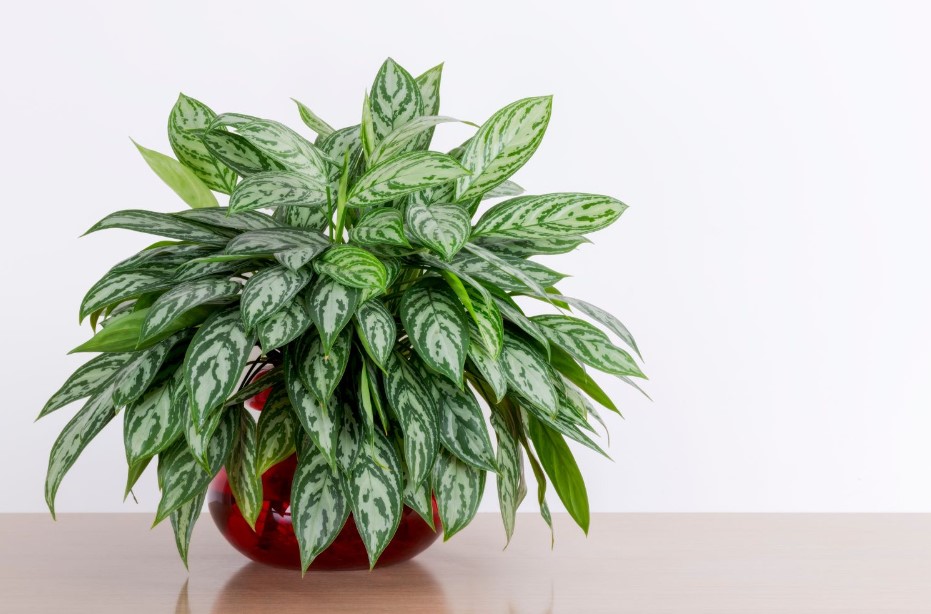
Conclusion
While Aglaonema is an appealing and easy-to-care-for houseplant, it can be toxic to cats if ingested. Cat owners need to be aware of the potential risks associated with this plant and take necessary precautions to prevent any toxicity incidents. By keeping Aglaonema out of your cat’s reach, providing suitable alternatives, and being vigilant, you can create a safe environment for your cat and your plants. Remember, if you suspect your cat has ingested Aglaonema or any other toxic plant, seek veterinary assistance promptly to ensure the health and well-being of your feline companion. Raed article about Do Cacti Produce Oxygen Inside? and Do Pothos Need Drainage? in Avi Hoffman Garden.
FAQ: Aglaonema (Chinese Evergreen) Toxicity to Cats
A: Chinese evergreen, also known as Aglaonema, can be toxic to cats. The leaves contain insoluble calcium oxalate crystals that can cause oral irritation, gastrointestinal upset, and respiratory distress in cats if ingested.
A: Yes, aglaonema leaves are considered poisonous to cats. They contain insoluble calcium oxalate crystals that can cause various toxicity symptoms if cats ingest them.
A: Keep the plant out of your cat’s reach to prevent aglaonema toxicity. Please place it in areas inaccessible to your cat or consider cat-safe alternatives. Supervise interactions and provide alternative stimuli to reduce their interest in chewing on plants.
A: If you suspect aglaonema ingestion or observe symptoms of toxicity, contact your veterinarian immediately. They will guide necessary steps, such as inducing vomiting, administering activated charcoal, or providing supportive care.
A: Yes, there are cat-safe alternatives to aglaonema plants. Some examples include spider plants (Chlorophytum comosum) and catnip (Nepeta cataria). These plants are non-toxic to cats and can be enjoyed without posing a risk to their health.
Remember, it’s always best to consult your veterinarian for personalized advice and recommendations regarding your cat’s health and safety.

